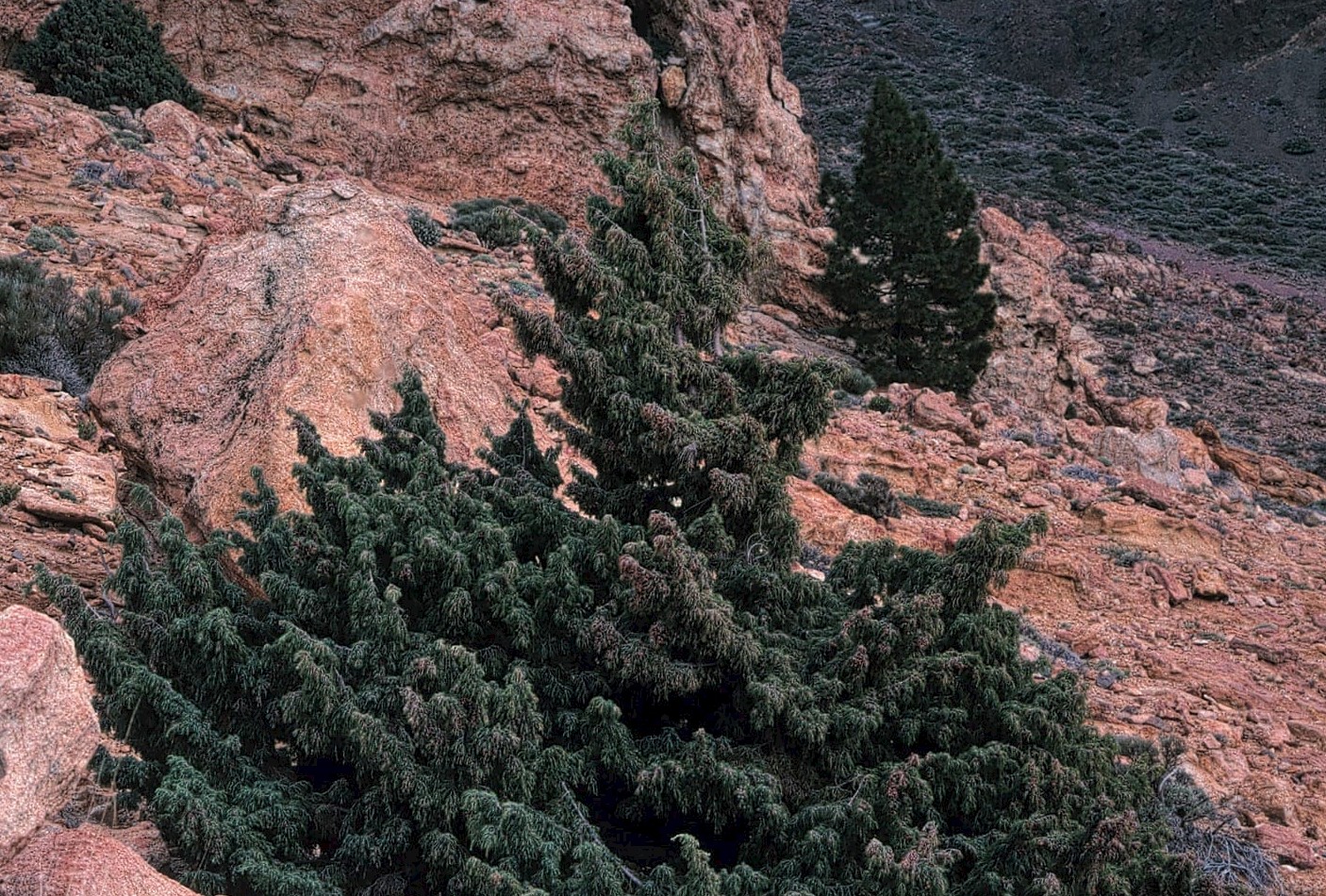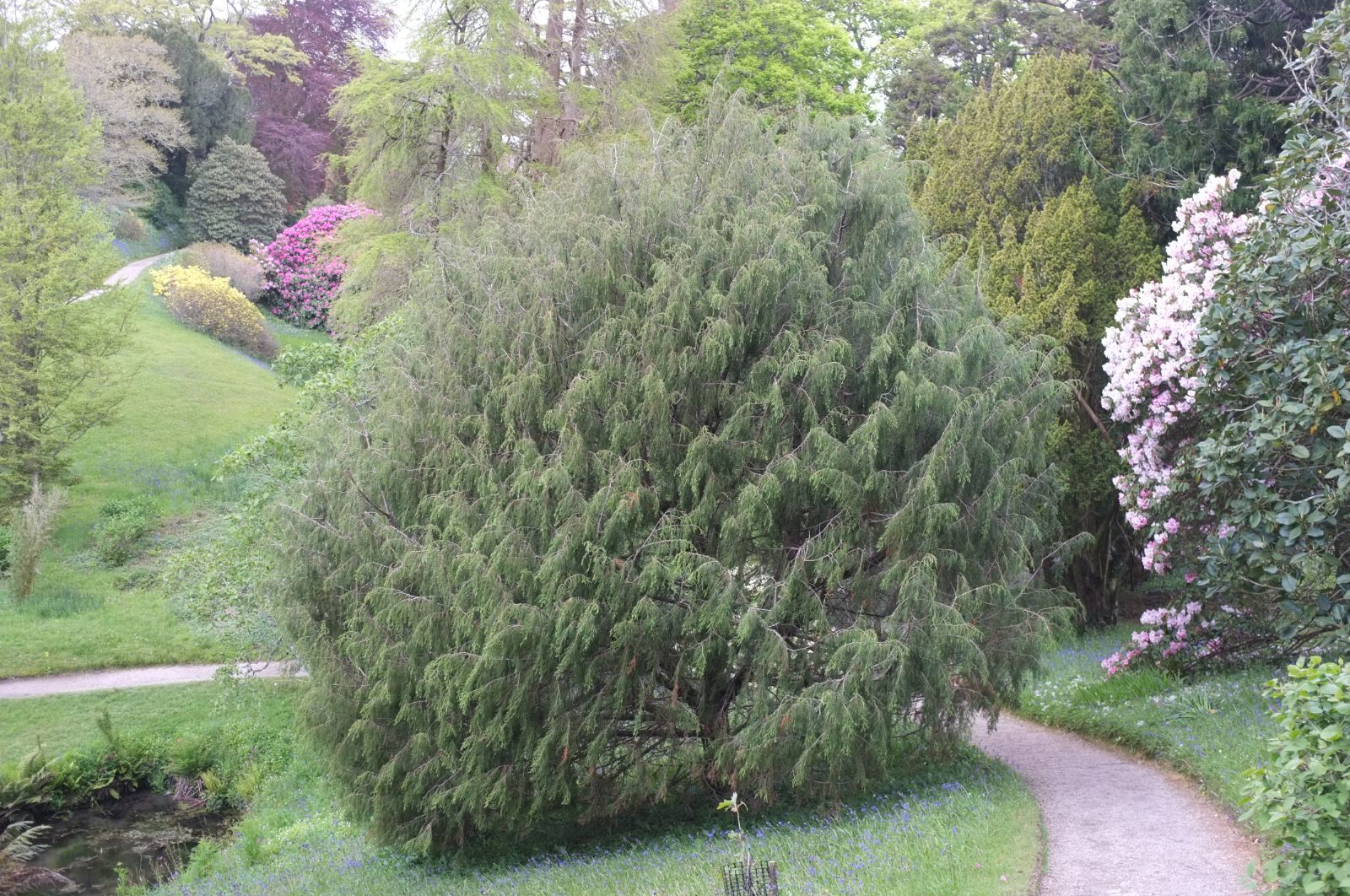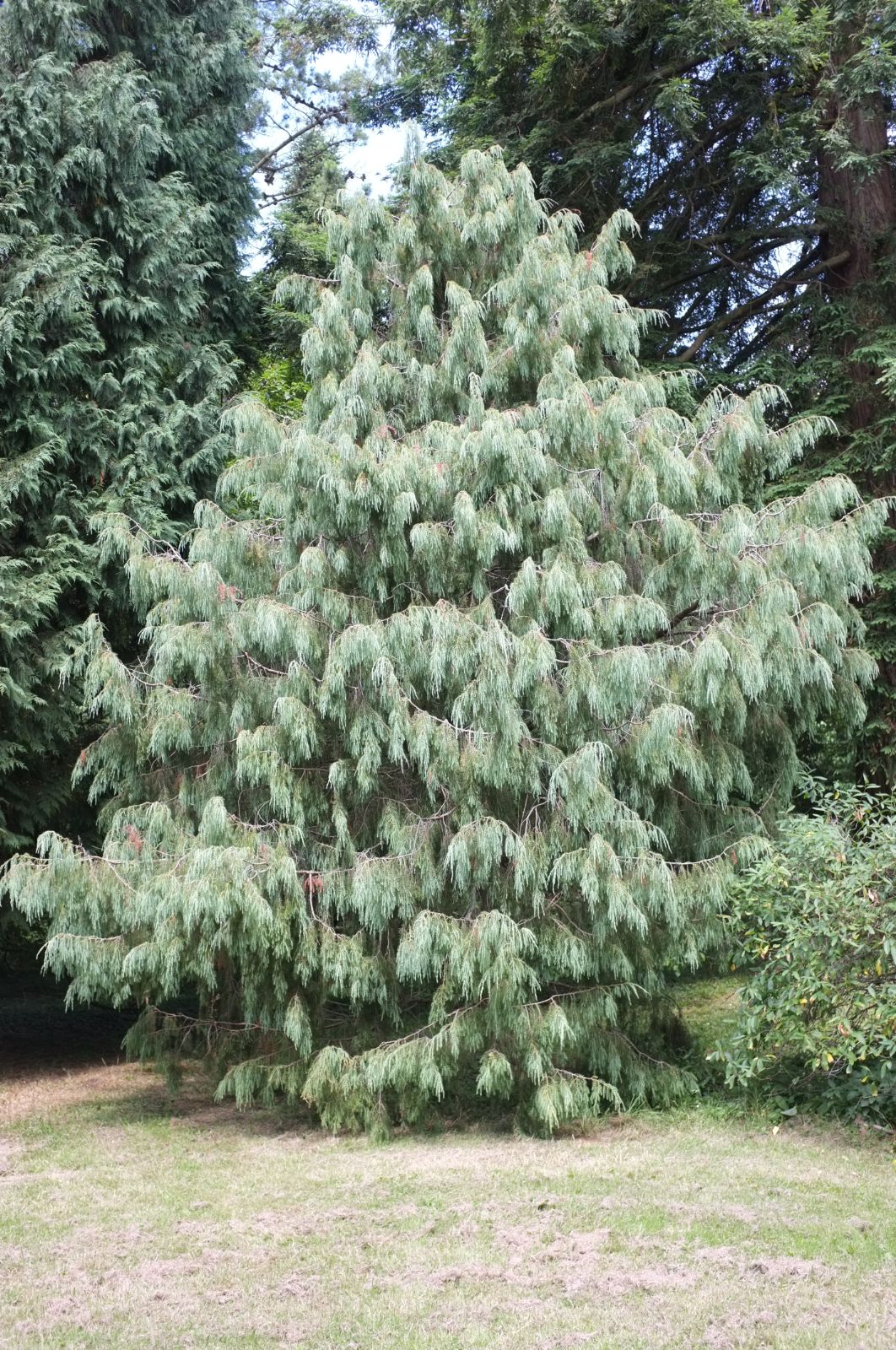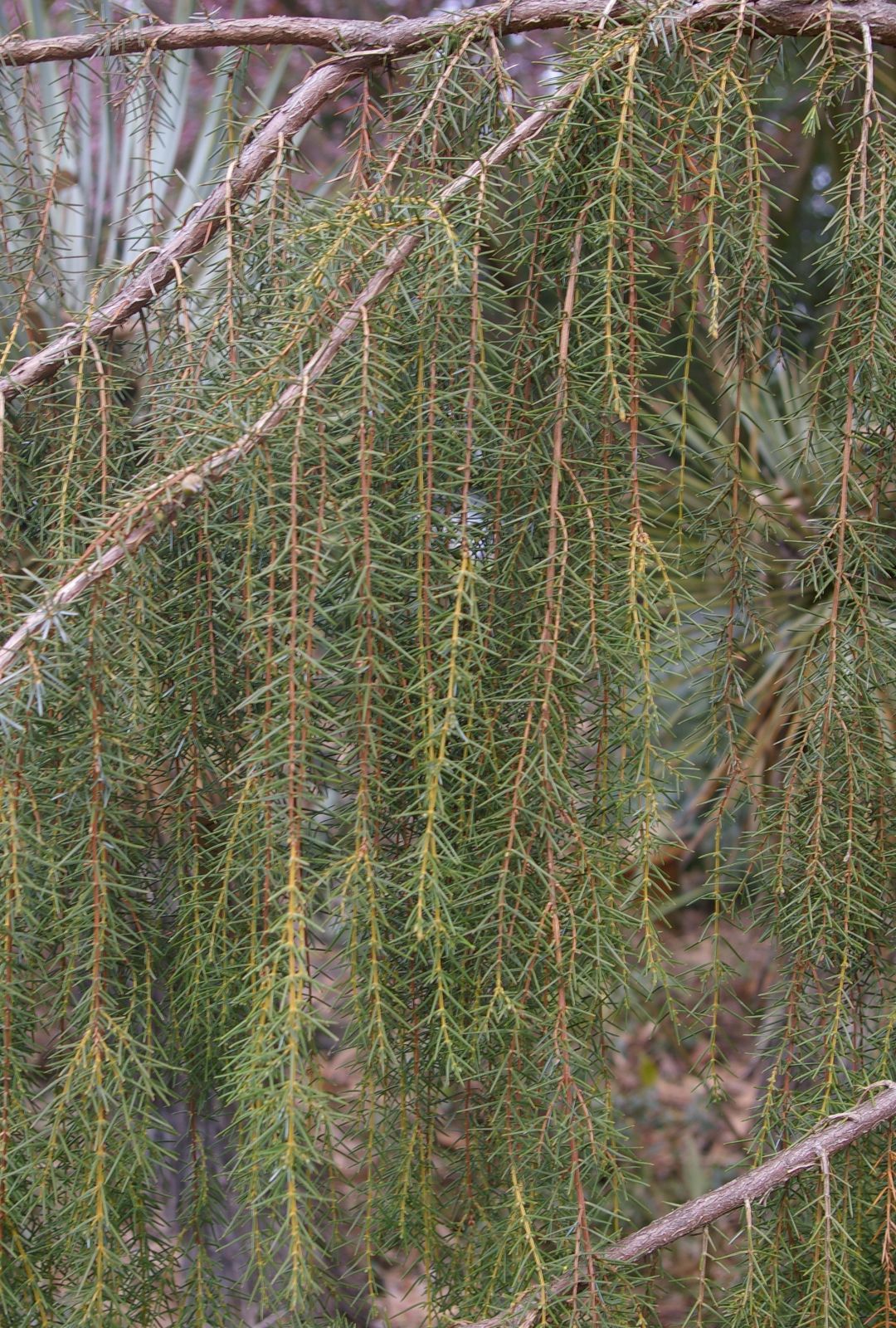Juniperus cedrus
Credits
Article from New Trees by John Grimshaw & Ross Bayton
Recommended citation
'Juniperus cedrus' from the website Trees and Shrubs Online (treesandshrubsonline.
Genus
Common Names
- Canary Islands Juniper
Other taxa in genus
- Juniperus bermudiana
- Juniperus chinensis
- Juniperus communis
- Juniperus conferta
- Juniperus deppeana
- Juniperus drupacea
- Juniperus excelsa
- Juniperus flaccida
- Juniperus foetidissima
- Juniperus formosana
- Juniperus horizontalis
- Juniperus komarovii
- Juniperus occidentalis
- Juniperus oxycedrus
- Juniperus phoenicea
- Juniperus pingii
- Juniperus procera
- Juniperus procumbens
- Juniperus recurva
- Juniperus rigida
- Juniperus sabina
- Juniperus saltuaria
- Juniperus scopulorum
- Juniperus semiglobosa
- Juniperus squamata
- Juniperus thurifera
- Juniperus tibetica
- Juniperus virginiana
- Juniperus wallichiana
Shrub or tree to 30 m, 0.5–1.2 m dbh. Bark orange-brown, peeling in long, narrow strips. Crown narrow and conical initially, later somewhat columnar and open, though wild specimens are often contorted. Leaves of a juvenile form, 0.8–1.2 × 0.1–0.15 cm, white-striped above, green below, apex acute to obtuse. Dioecious. Male strobili 0.4–0.7 cm long, subglobose to cylindrical, microsporophylls eight. Female cones fleshy, usually solitary, subglobose to globose, 0.9–1.2 × 0.4–0.7 cm, mature after 18 months, dark blue with greyish bloom, reddish yellow at maturity. Seeds three, coalesced into a single dispersal unit. Press 1994, Farjon 2005c. Distribution PORTUGAL: Madeira; SPAIN: Canary Is. (La Palma, Tenerife). Habitat Laurisilva forest and other high-altitude areas up to 2300 m asl. USDA Hardiness Zone 9. Conservation status Endangered. Juniperus cedrus has declined because of overgrazing and timber exploitation. Mature trees have become restricted to inaccessible cliffs. Illustration NT419. Cross-references B489, S294, K132. Taxonomic note Juniperus cedrus is closely related to J. oxycedrus L. in the Mediterranean and J. brevifolia (Seub.) Antoine in the Azores.
The occurrence of Juniperus cedrus in the mild climates of the Canary Islands and Madeira seems to have discouraged its planting elsewhere – ‘presumably because no one expected it to be hardy here’ suggests Chris Page (2004), writing about the absence of old specimens in Cornish gardens. Page notes the currently successful cultivation of young trees of J. cedrus in four gardens in that county, and TROBI records its presence in other very mild locations. The current champion appears to be a specimen of 10.5 m (24 cm dbh) at Mount Usher, measured in 2000 for TROI. There was formerly a double-trunked tree of 7 m (both trunks 38 cm dbh) at Highdown, Goring, West Sussex, but this has not been recorded again since it was measured by Alan Mitchell in 1983. In the wild it can form a fine tree with pendulous side branches. It grows successfully at Bedgebury, where three young specimens were planted in 1996 as part of the Conifer Conservation Programme. These derive from seed collected in 1992 by a team from the Royal Botanic Garden Edinburgh (A. Ensoll, F. Nelson, A. Wright 1) at 1000 m on Madeira. The tallest was a multistemmed 4.5 m in 2007; a smaller individual is now fruiting (D. Luscombe, pers. comm. 2007).




